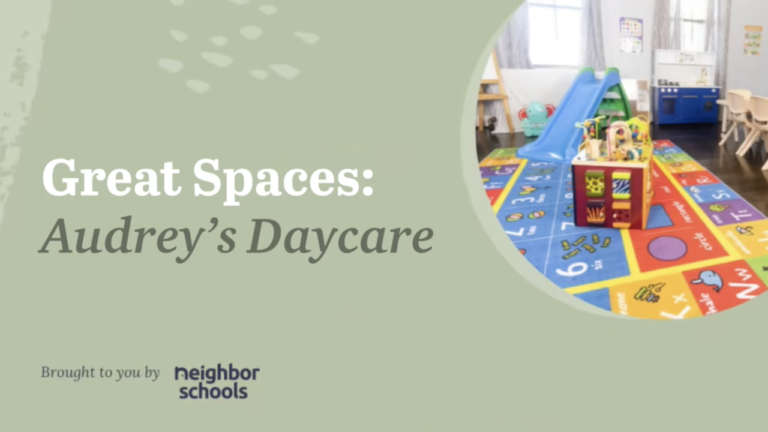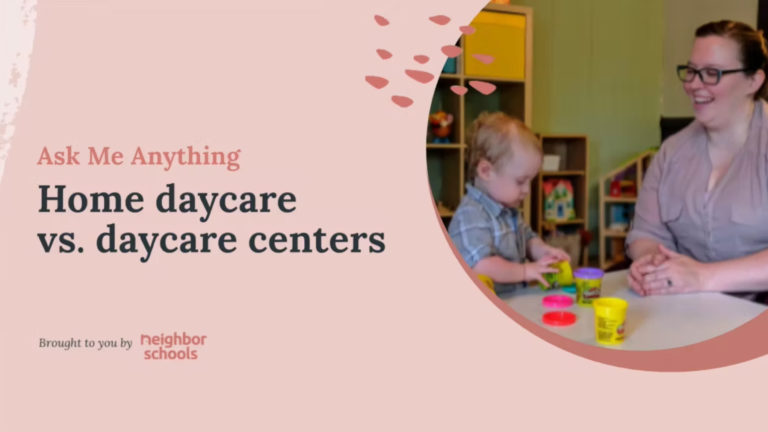Being able to care for and educate your own child is one of the most fulfilling parts of being an FCC Provider. But playing the roles of mom and Provider at once can be very tricky.
Picture this: all the kids want to play with a new toy fire truck. Each child gets to take their turn, but when it’s time for your kiddo to hand it over, they refuse: “This is my house, so it’s mine!”
Here we go again…
And what if they’re just having a tough day? You know you have to resist the urge to help solve their problem or coddle them. Instead, you have to treat your child as you would the other children in your program—and have them learn those crucial problem-solving skills on their own.
When she was just starting out, this is where Beth Goodwin, of Fitchburg, MA, struggled with the most.
Beth has since discovered ways to separate her two roles. “I make sure we have a ritual every morning where we spend time together, just the two of us, so his bucket is full before the other kids arrive.”
Letoya Thompson of Mattapan, MA practices a similar routine with her two-year-old son. “In the mornings, I always give him tons of attention,” she explains. “By the time the parents and other kids arrive, he’s happy to go outside and greet everyone.”
Both Beth and Letoya have had their sons in their programs for a little over a year. They agree there’s a lot to love about being a mom and a Provider at the same time, but they also know there are a lot of challenges. Over time, they’ve come up with great strategies on how to make it work.
So, how can Providers balance the roles of educator and mom and avoid burnout—or worse, having to send their child to another program if things don’t work out? Beth and Letoya share nine tips on how they taught their sons to be comfortable sharing mom and their home, and how Providers can successfully pull off the balancing act.
Tip #1: Start slow and start early
When Beth started, she began with only three kids: her son and two others. She knew that it would be more fun for her son, and easier for her, if the first children were about the same age so he could play with them. So she focused on finding the right two children to be the first, and worked through these initial challenges with those children before bringing in a full mix of ages.
Because of that, her son became very close to them. In fact, the friendships became so strong, Beth explains, they started to see the other kids and their families outside of school.
Eventually, Beth remarks, “it became less of having to share his home and mommy and more ‘I get to see my friends every day!’”
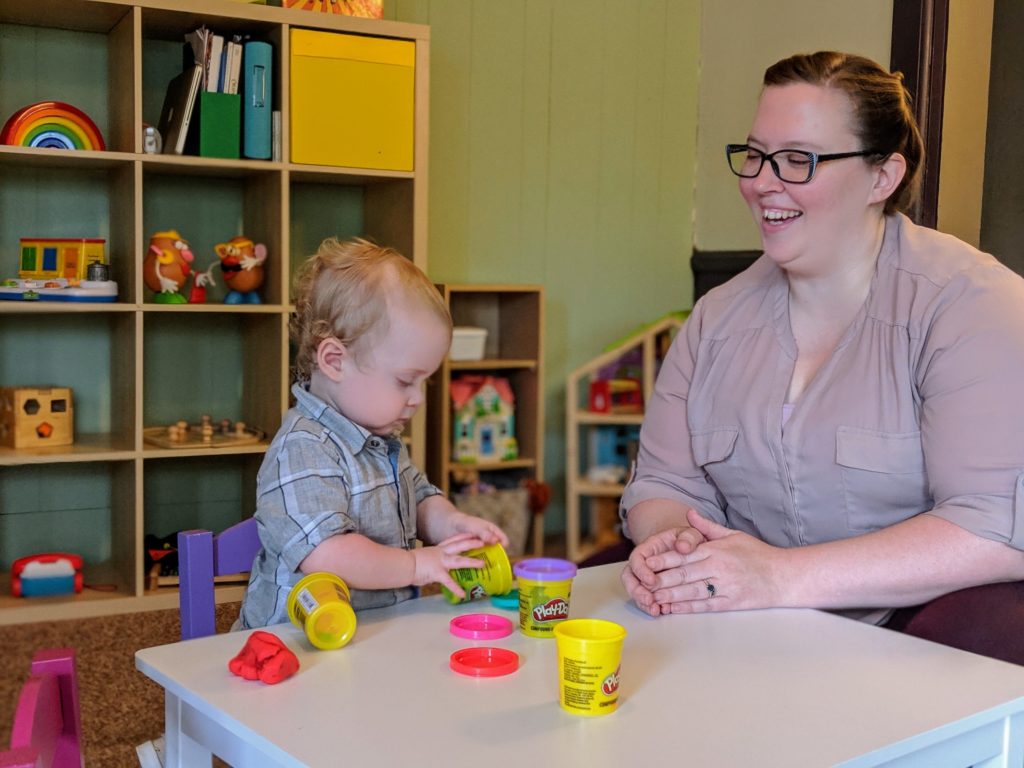

Tip #2: Treat your child the same as the other children
When Letoya’s in “Provider-mode,” she has to treat her son the same way she treats the rest of the kids—even if that means putting the other kids’ needs first.
“In my mind, it’s harder on them because they don’t have a mom here. Most of the time, I have to put them first,” Letoya explains.
For example, when multiple children are crying, Letoya tries to settle the other children first, and then her own son.
“It’s hard, but I’ve learned to let my child wait if another child is having a problem,” Letoya says. “And it feels good to both my families and me that I’m not biased towards my son, and I can separate his needs from my business.”
Tip #3: But make sure to create space for 1:1 time with your child
Both Providers agree that having a daily ritual with just their sons is key to strengthening and balancing their relationships.
Beth has a morning and evening routine that she does every day with her son.
In the morning, Beth will wake her son up, get him ready for the day, and have breakfast together—just the two of them.
Then, after everyone leaves, the evening routine begins. Beth says they will snuggle, watch videos, read a book, or tell a story before it’s time to send him off to bed.
“Having our little routine helps us reconnect,” Beth explains. “He doesn’t get to leave school. He lives school. And I don’t get to leave work—we’re always here. So, it’s important for us to just have a reset to get ready for and end the day together.”
Letoya says she has a morning routine with her son, too. “Each morning, I wake him up and give him tons of kisses and lots of love. That’s how we start every day.”
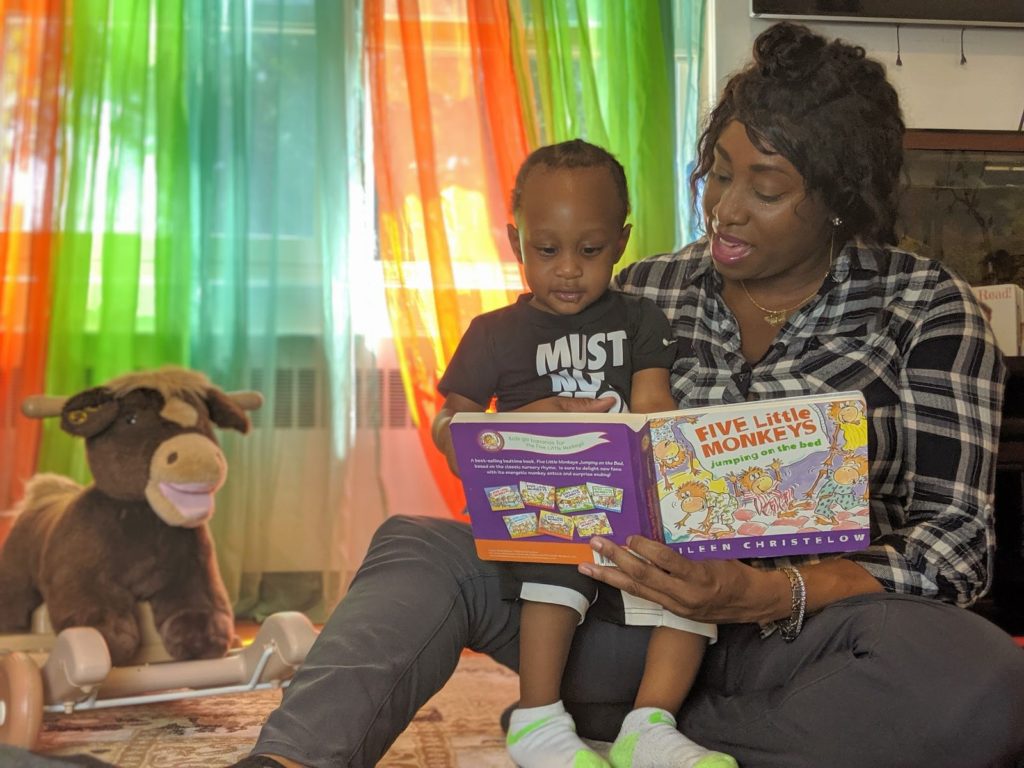

Tip #4: Create separation between the program and home space
Beth says that when she got started, she ensured that her son had a separate area in his room for toys he doesn’t want to share with other kids.
“When it comes to toys, he knows that as long as it’s in his room, it’s his,” Beth says. “And he if wants to bring them out, he can. But he has to understand that at that point, it’s fair game. Other kids can use it.”
And this works, Beth says. “He does pretty well with that, and he’s mature in that way, which is great.”
Tip #5: Focus on taking turns vs. sharing
Beth also acknowledges that when you’re working with two- and three-year-olds, there will always be issues of “it’s mine, I’m using that.”
But Beth says that in her program and with her son, it’s less of a focus on sharing and more turn-taking and problem-solving.
“A big lesson for all of the kids lately has been ‘Okay, well, if you don’t want to give that toy or book up, then let’s find something similar for somebody,” Beth describes. “And my son has developed that skill where he understands, ‘I’m using this truck, but maybe I can find another truck for the kid who wants it.’ That’s been working out for us.”
Tip #6: Have a back-up plan if taking turns goes awry
When Letoya started her program, it took her son a lot of time to get used to sharing the toys with the other kids.
“In the beginning, if I was introducing a child to a toy, he would come over and take it,” Letoya explains. “I would have to tell him ‘No, that’s not nice, you have to learn how to share.’”
“But it’s hard to get little kids to share,” Letoya continues. “So I had to figure out other ways to make it work.”
Now, when Letoya is playing with another child and her son—or any other child in her program—wants to take the toy they’re using, she has a couple of strategies.
First, she’ll try to find a similar toy they can play with instead, or start them on an activity that will get them interested in something else. If that doesn’t work, Letoya will cut 1:1 playtime early. Instead, she’ll find something all the kids can do together like a game or go outside and visit her garden.
Letoya says this works because it avoids a blowup and keeps all the kids engaged, so no one ever feels left out.
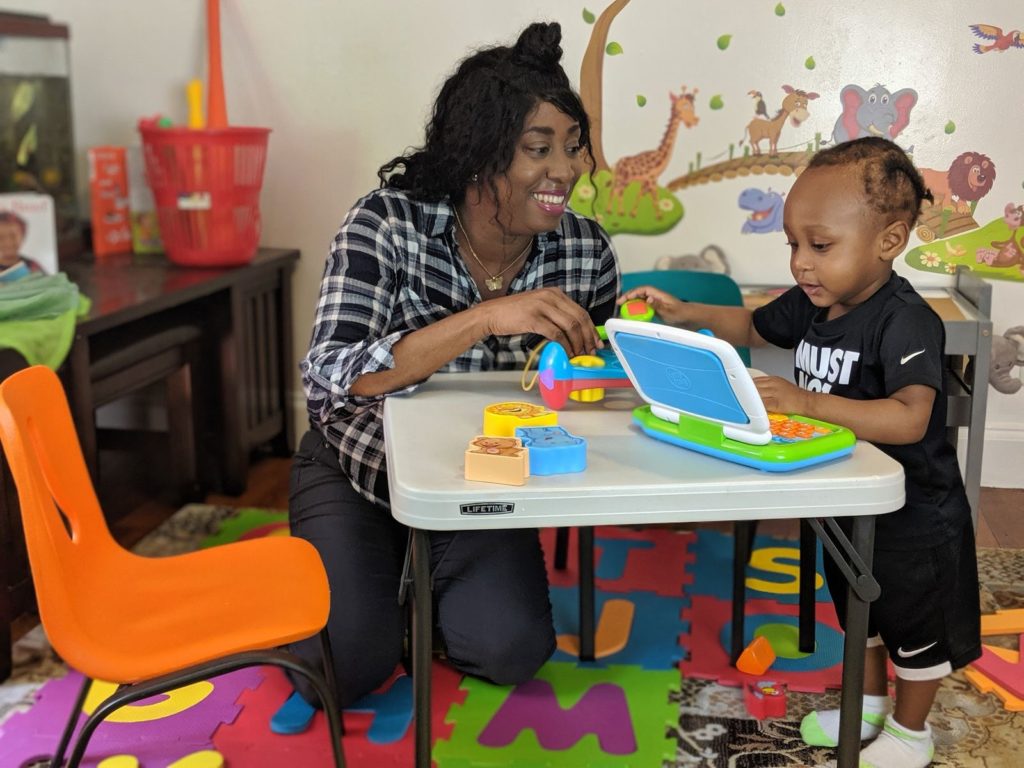

Tip #7: Accept that there will be rough patches
Let’s be real: even if you do everything perfectly, there are still going to be issues and tough moments you’ll have to get through.
For Beth, the hardest part of having her son in her program is when he’s having a bad day or is becoming frustrated with one of the other kids. She wants to jump in to help, but she knows it’s a teaching moment for him and should stand back.
“I struggle when I see him struggle,” Beth admits. “I want to jump right in because I’m his mommy, but I also want to give him a chance to figure it out on his own.
Letoya says that for her, the hardest part is when her son doesn’t follow the rules.
Her example is when she’s attending to another kid, sometimes her son heads into his bedroom and refuses to come back to the program space. Letoya explains that this puts her in a tough spot—she can’t take her eyes off the kids in her program, but she has to coax her son to leave his room at the same time and return to the main area.
“He sees the other kids and thinks, ‘Oh, it’s my mom, so it’s different for me,’” Letoya explains. “Sometimes, that’s the hardest thing about having him in my program—he doesn’t listen.”
Tip #8: Find moments of gratitude
There will be hard moments, but Beth and Letoya both agree—they’re so thankful for the unique experience that being a Provider for their sons provides.
Letoya says when her son was born premature, she had to give up her job to be with him. Once she was ready to go back to work, she struggled to find child care she could trust and afford.
“So that’s when I thought about my experience of taking care of children and realized I could do both,” Letoya shares. “I could make an income and be here all the time to watch him.”
And because of that decision, Letoya has been front and center to witness all of her son’s milestones.
“The best thing is just seeing him all the time—he’s right there!” Letoya gushes. “I get to see him laugh and be excited about learning new stuff and interacting with other kids.”
Beth says the most positive outcome of her experience has been seeing how her son has grown and developed a confident personality.
“He’s grown so much in playing with other kids and how to initiate play with other kids. It’s huge. A lot of kids struggle with that, Beth explains. “Now, even when we’re out and about in the community, he just goes up to kids at the playground and says ‘Hi, what’s your name?’”
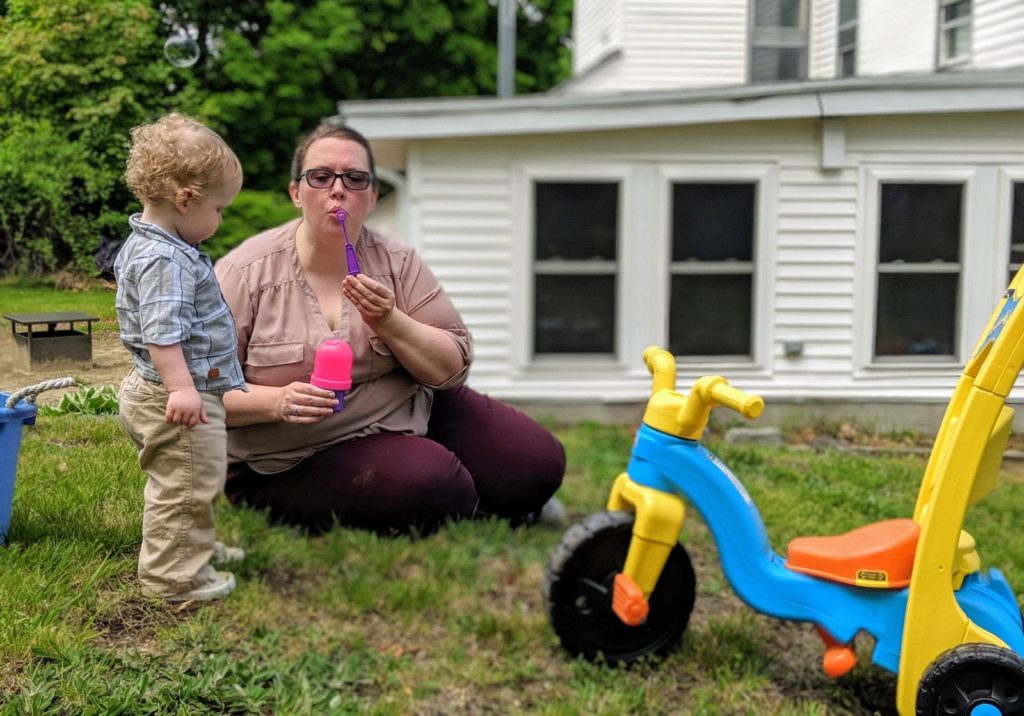

Tip #9: Just keep going
For Providers about to embark on the same journey as Beth and Letoya, here’s one piece of advice: just keep going!
Beth says that when she first got started and ran into some initial rocky moments, she really doubted herself. She didn’t think she could keep up the juggle.
But Beth says, over time, you’ll be happy you stuck with it and be grateful for all the moments and growth you’ve found by balancing both roles at once.
“Just keep swimming,” Beth says. “It gets better. You get into a groove, even with your own kid. You figure it out.”




